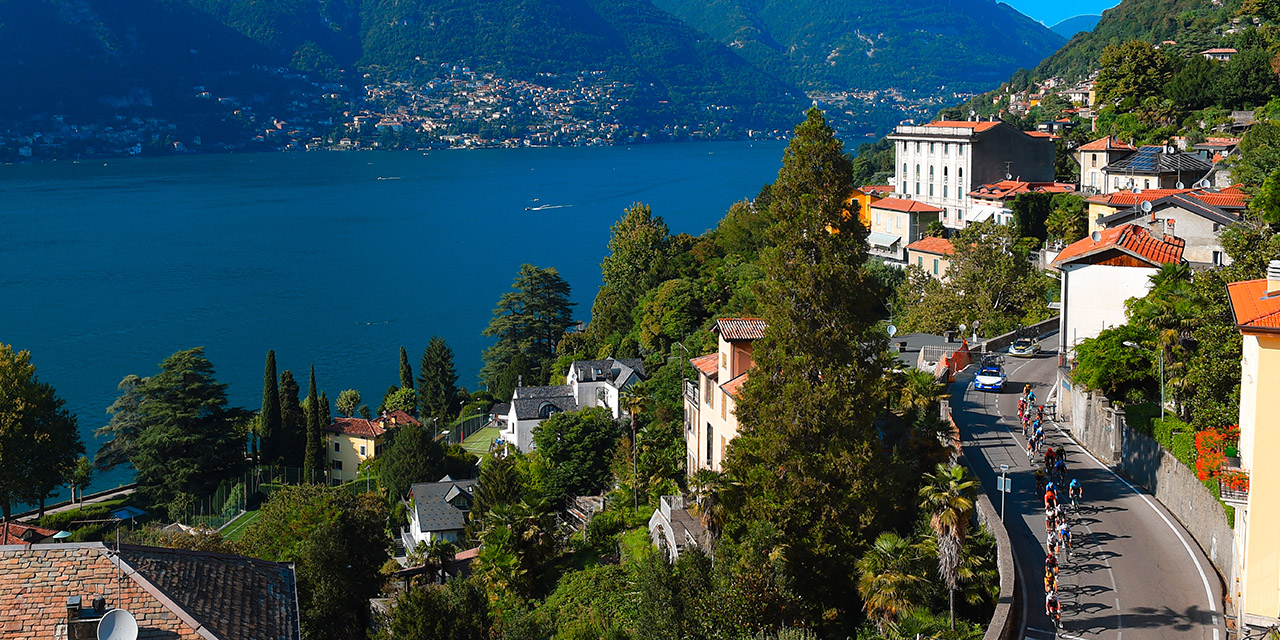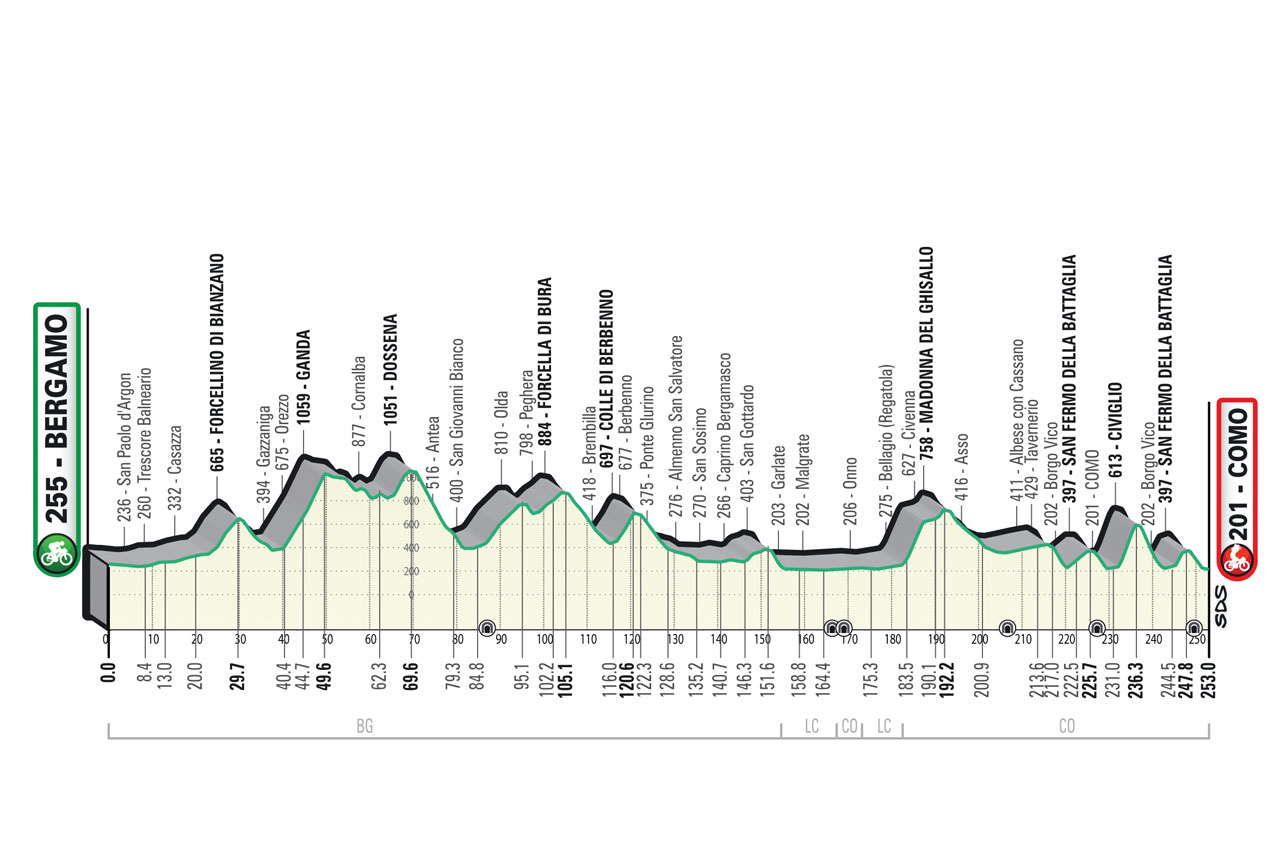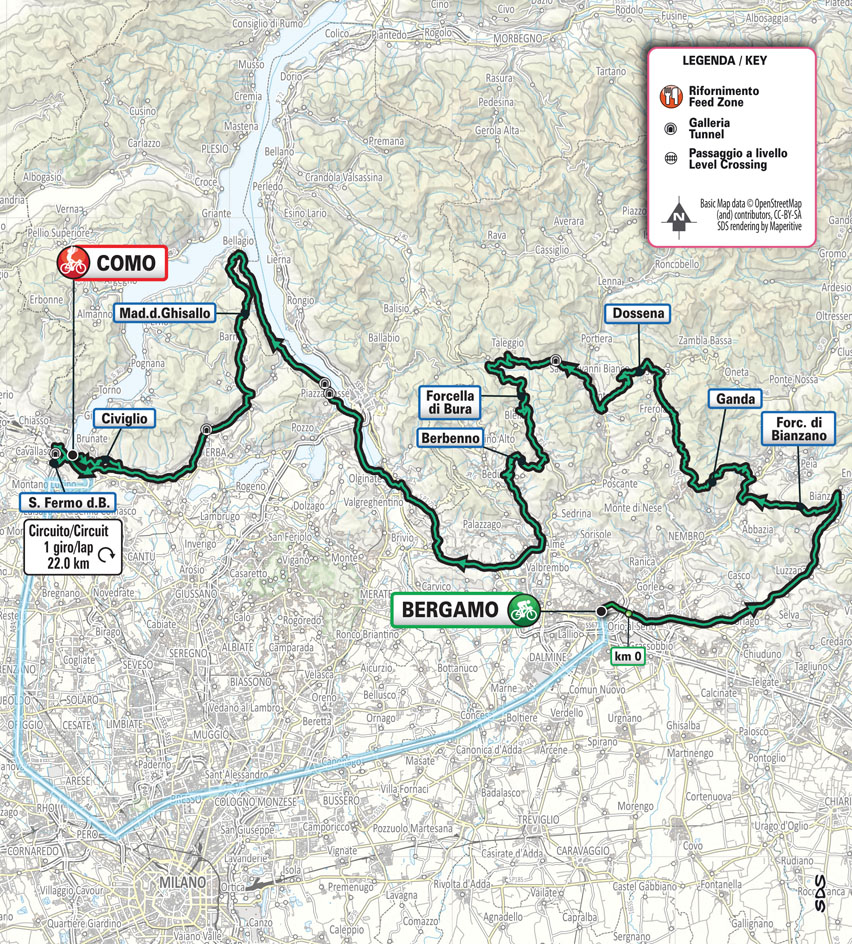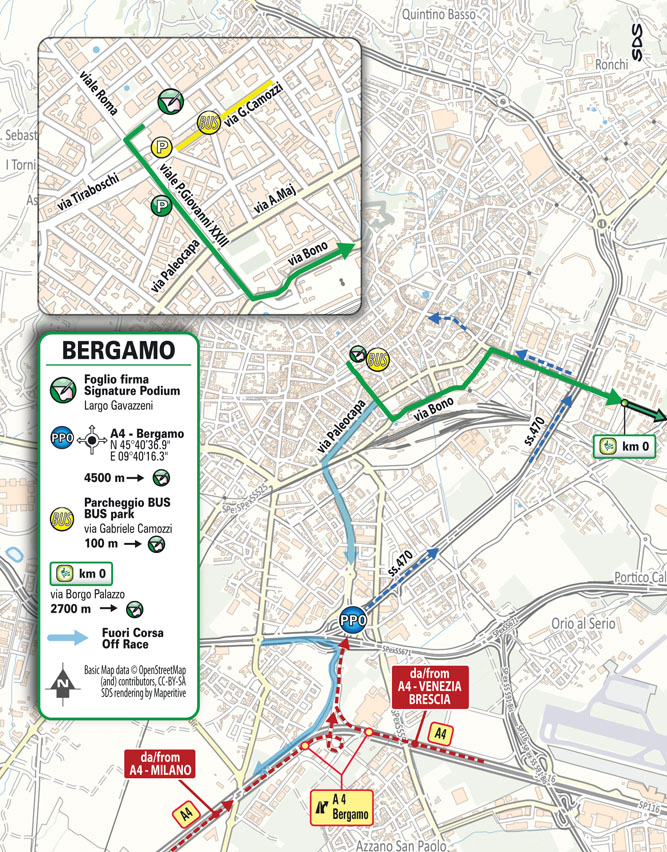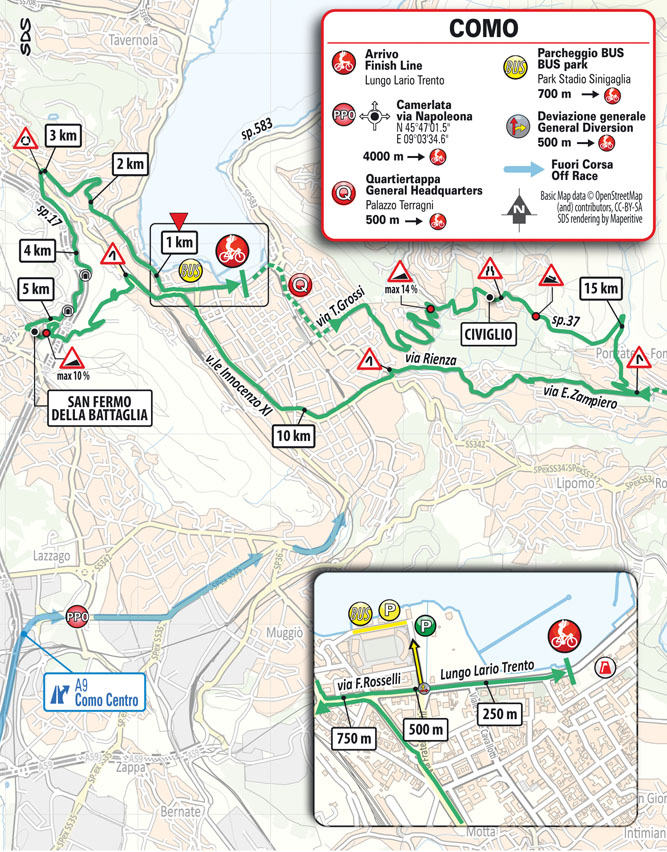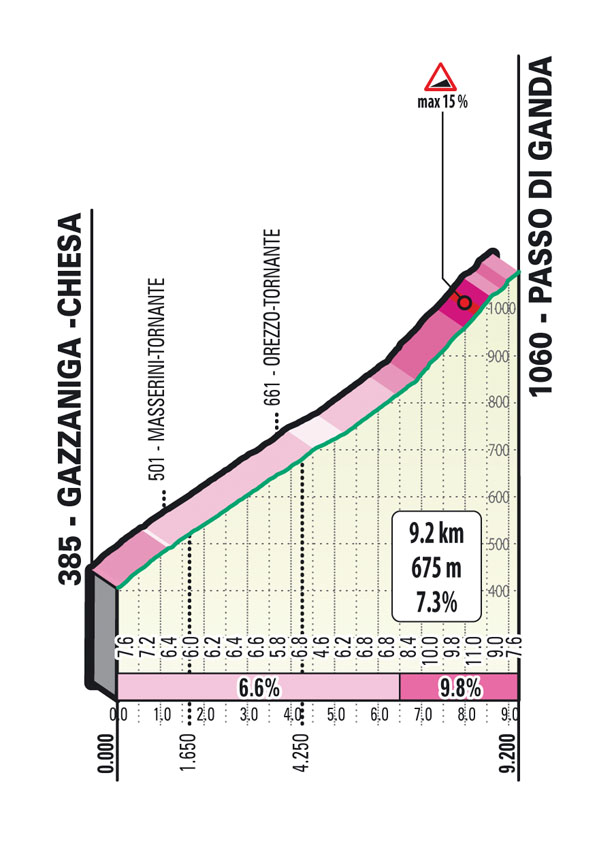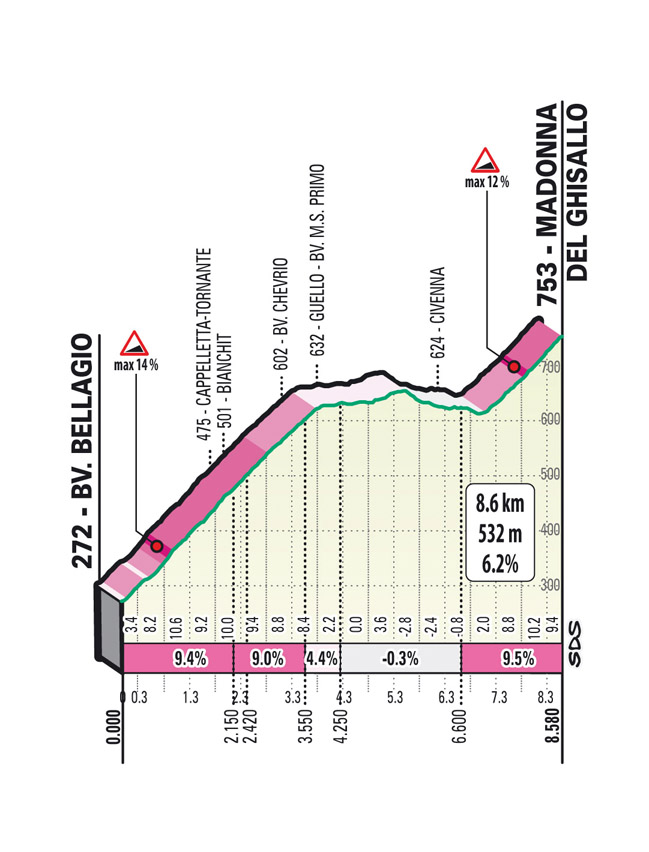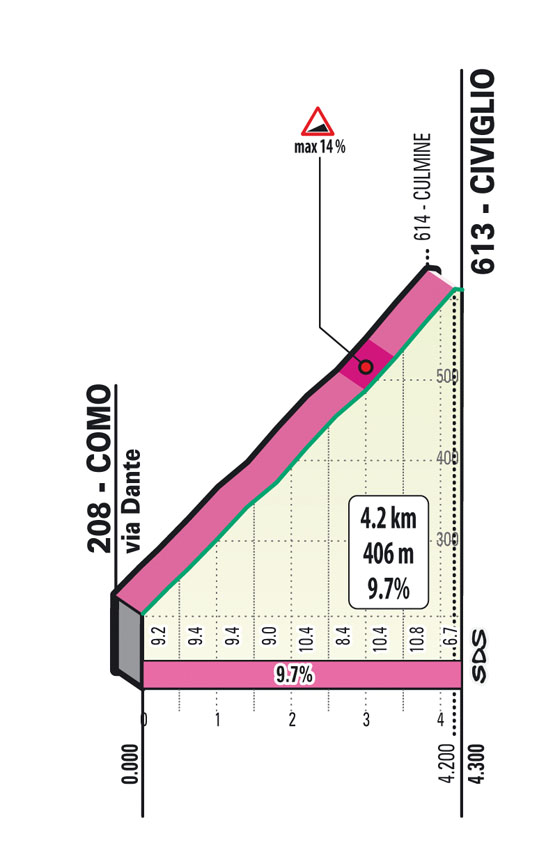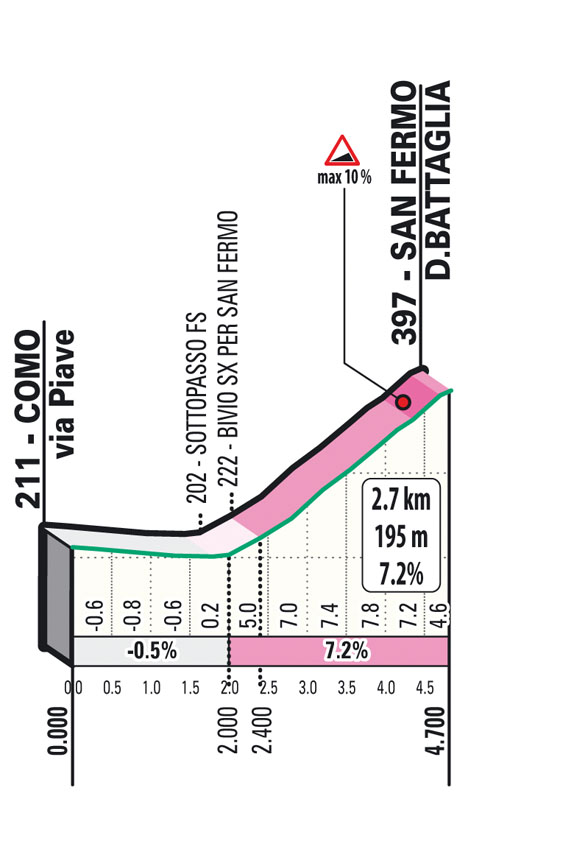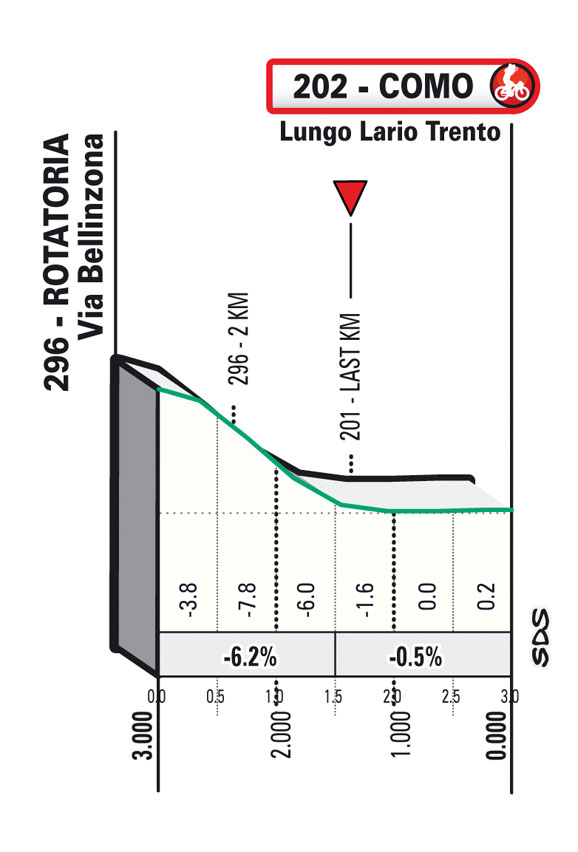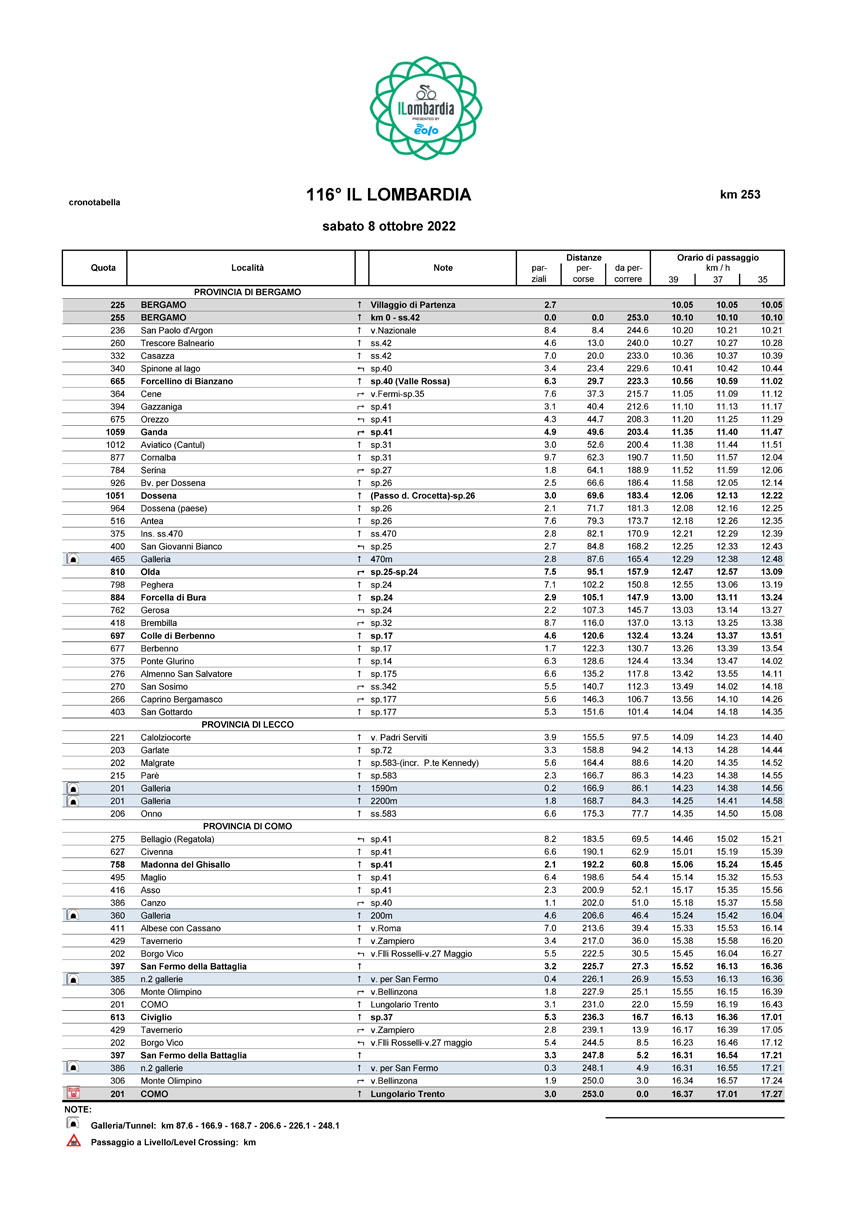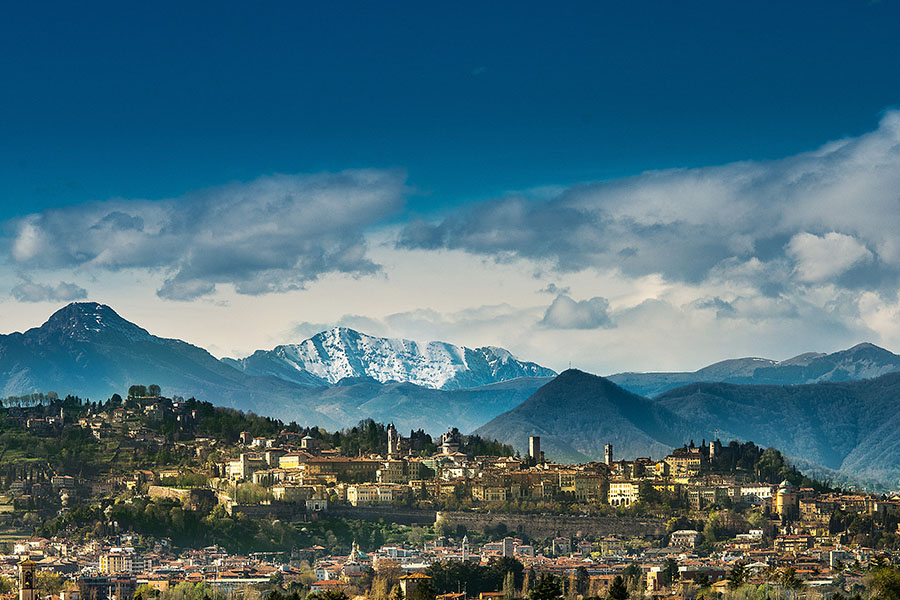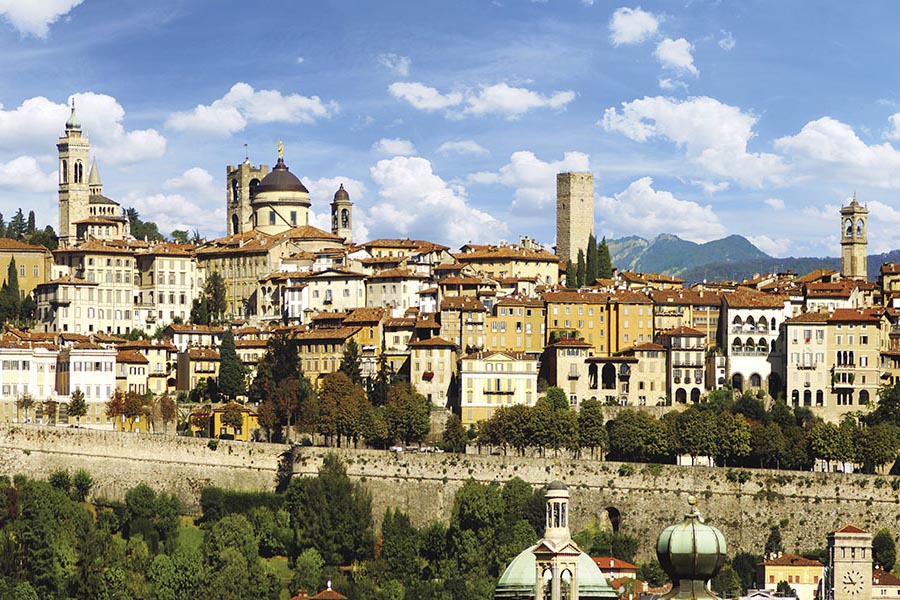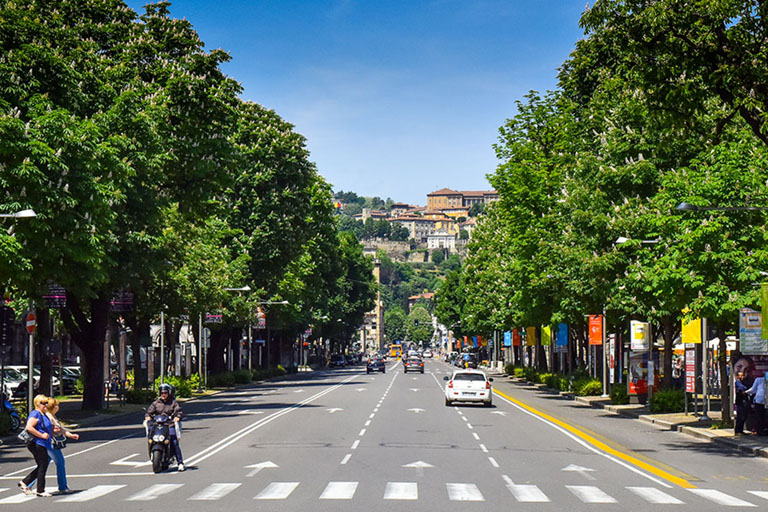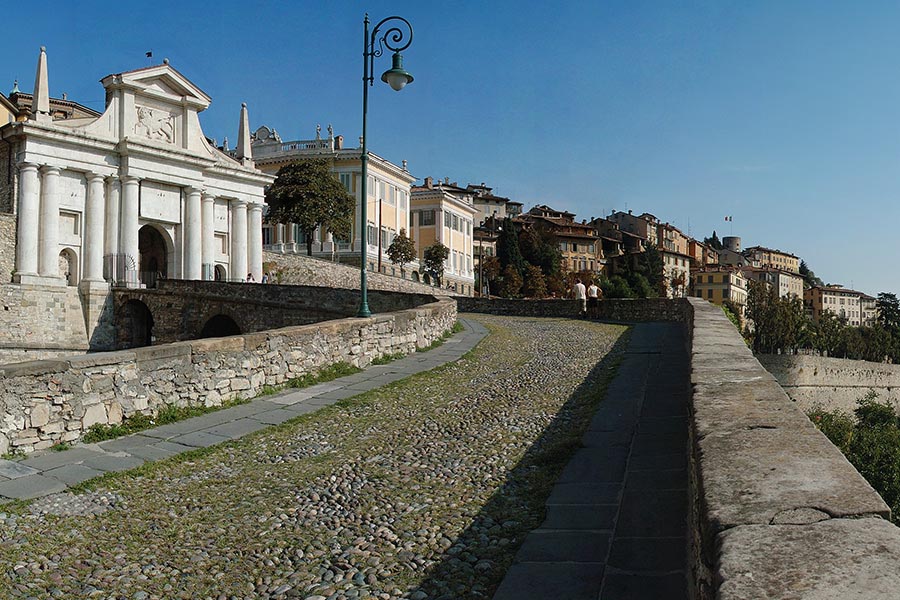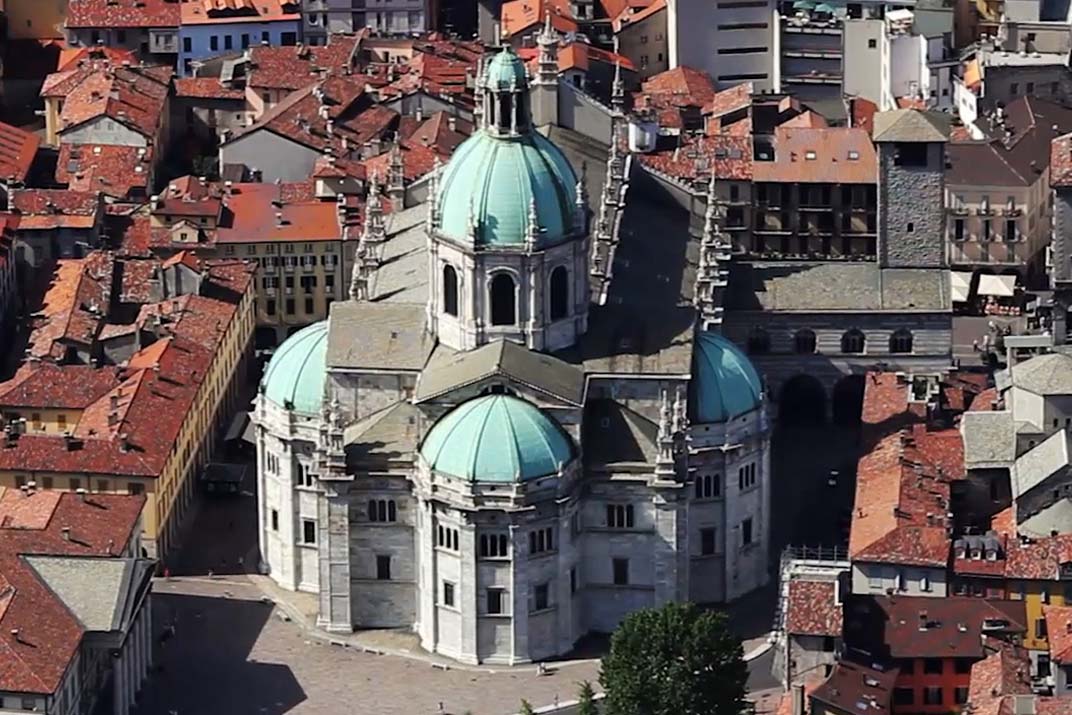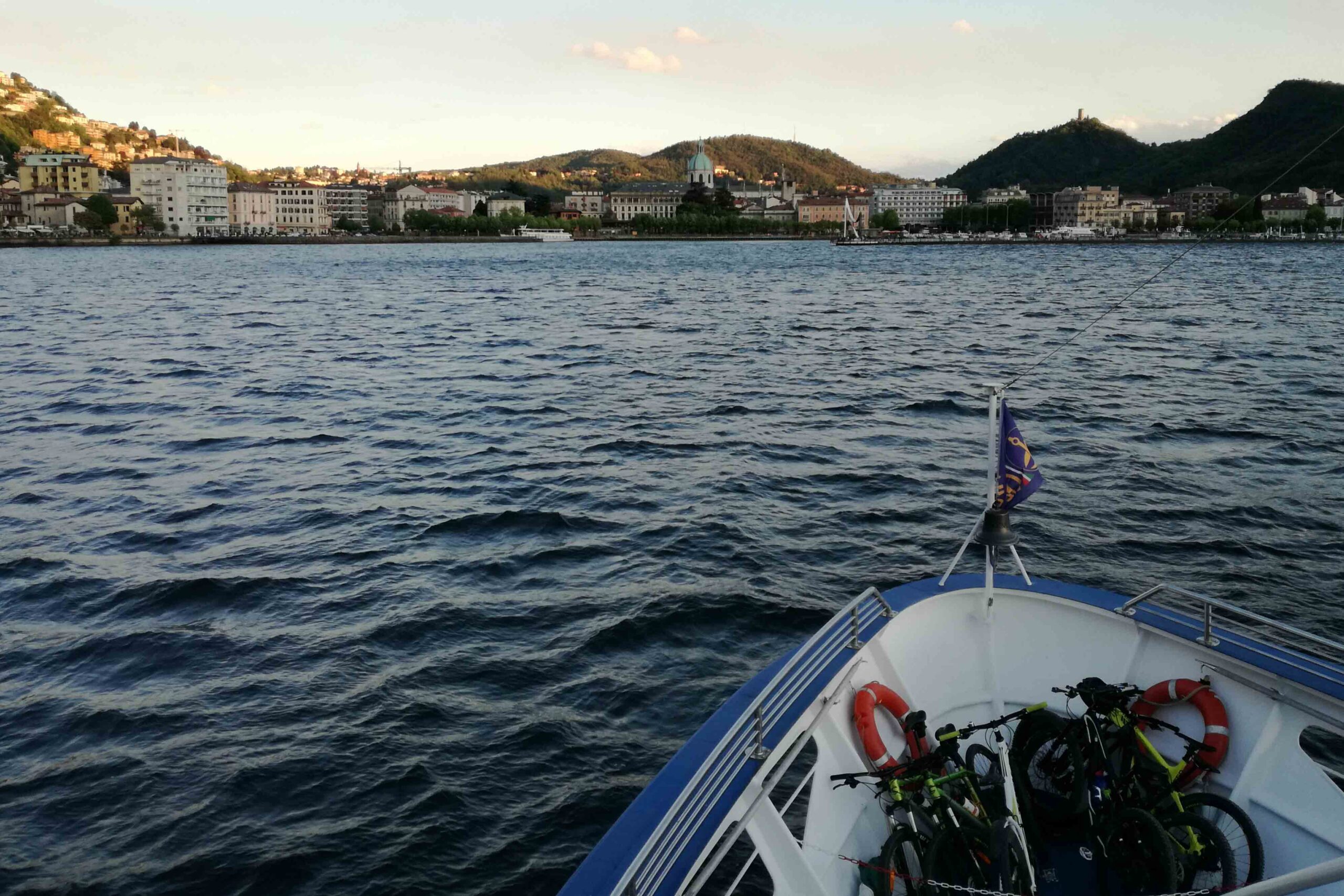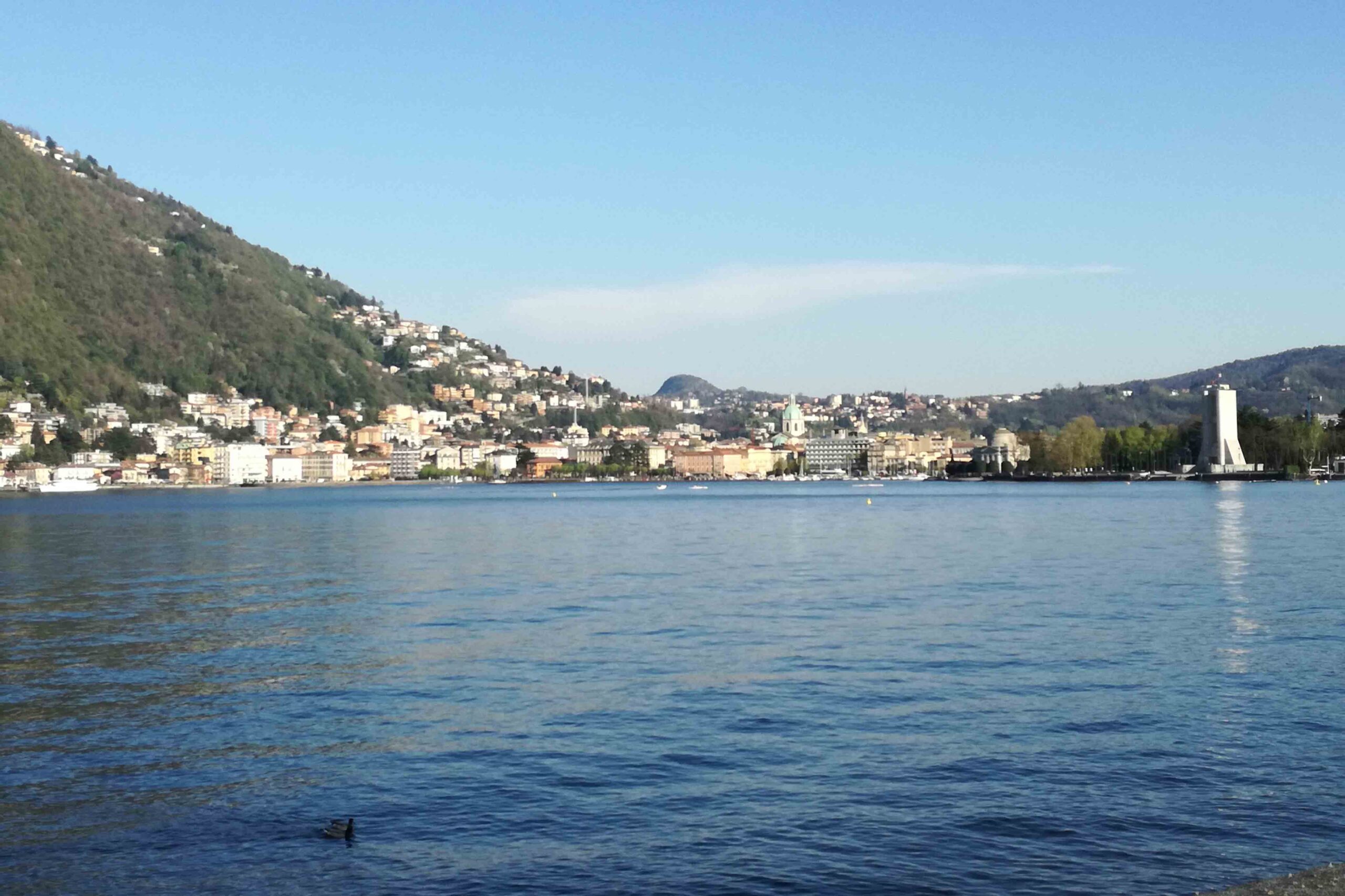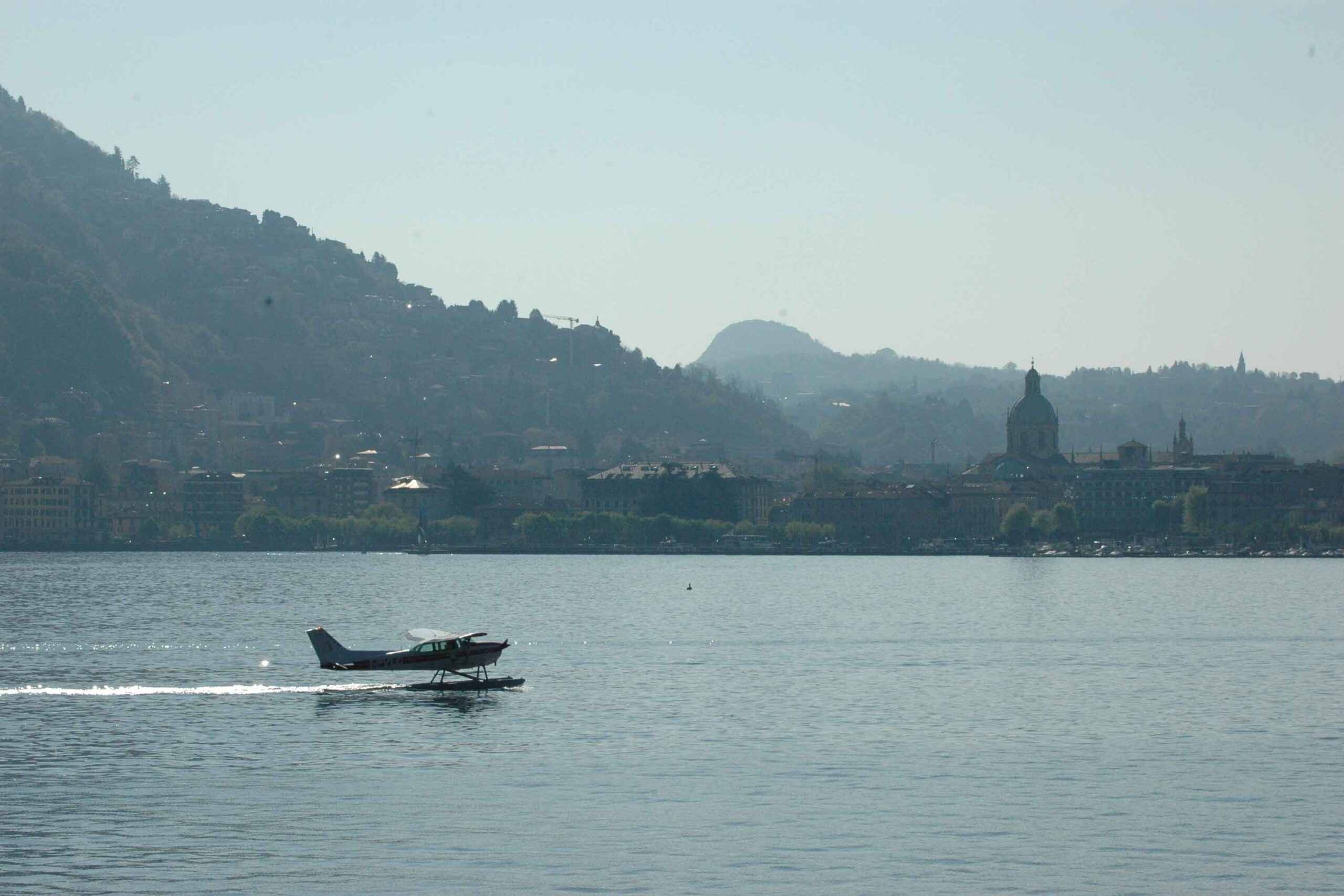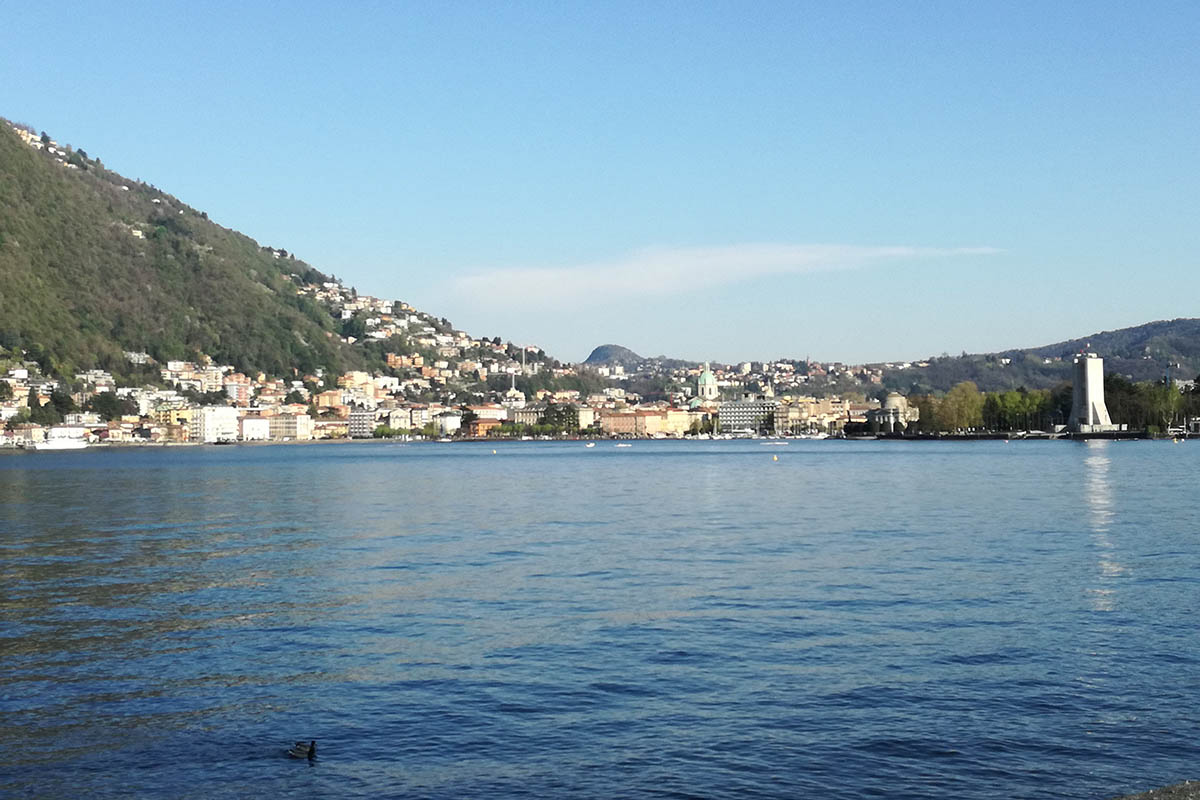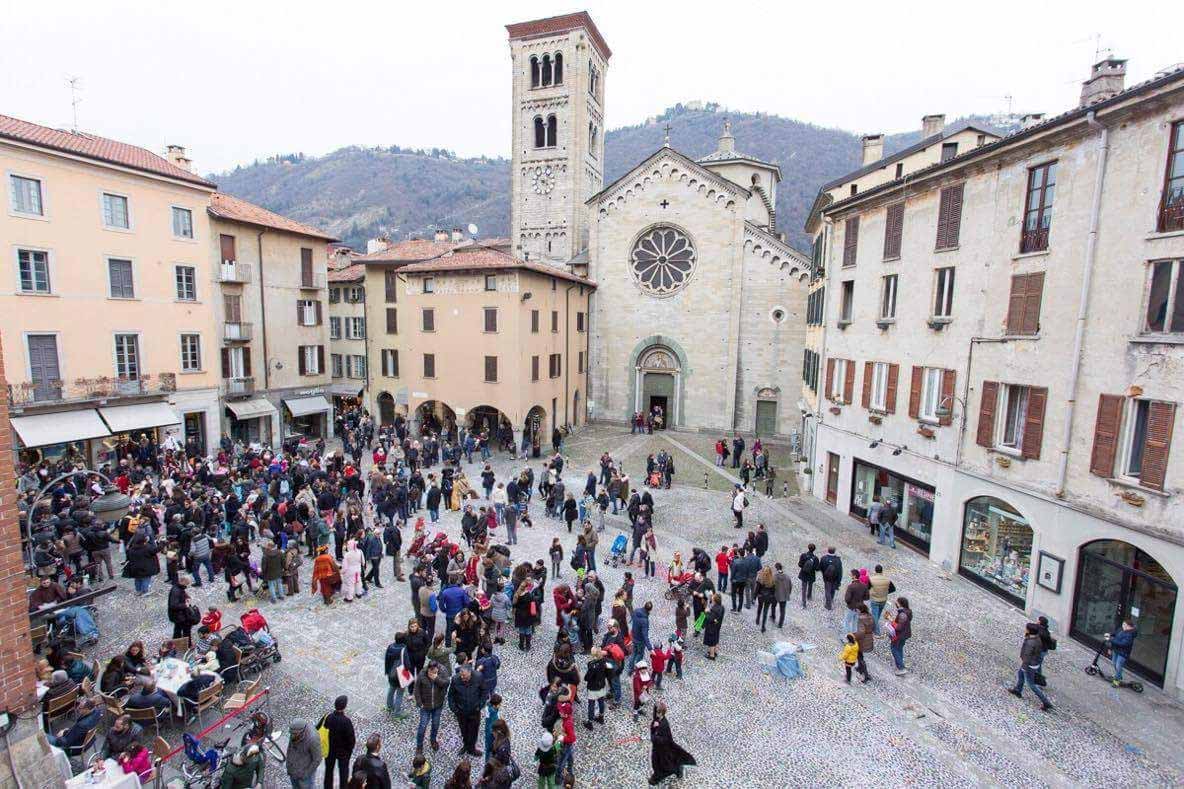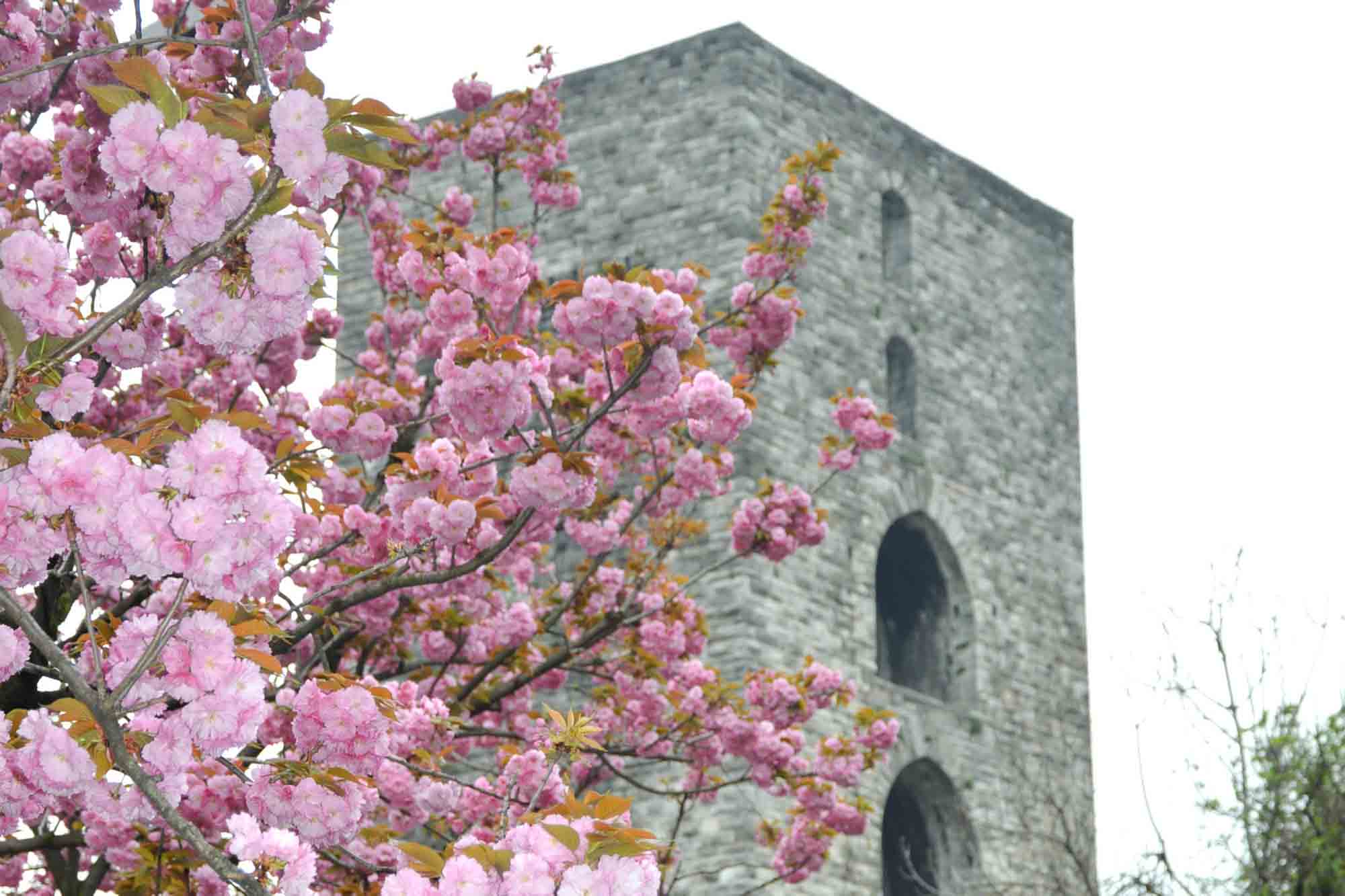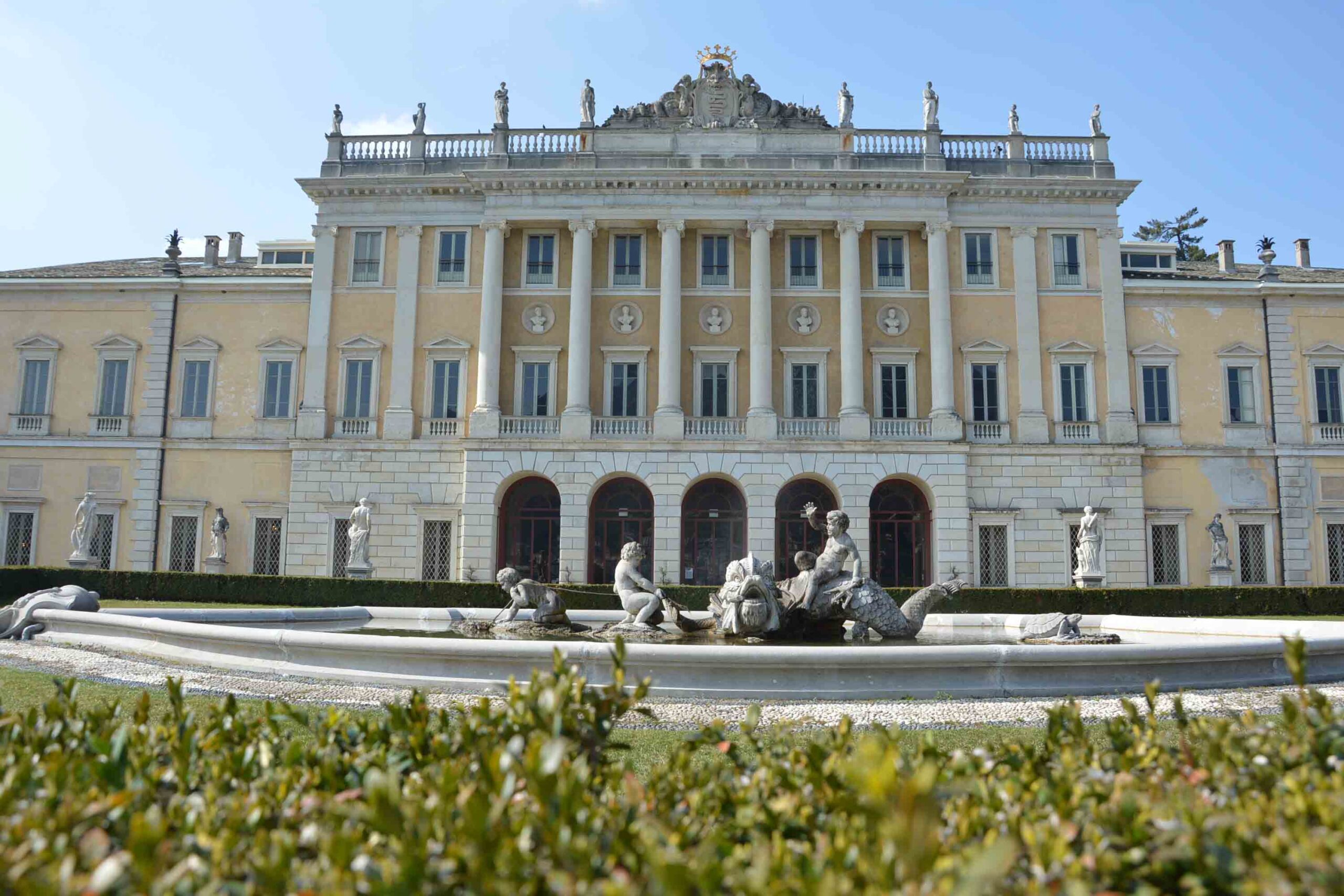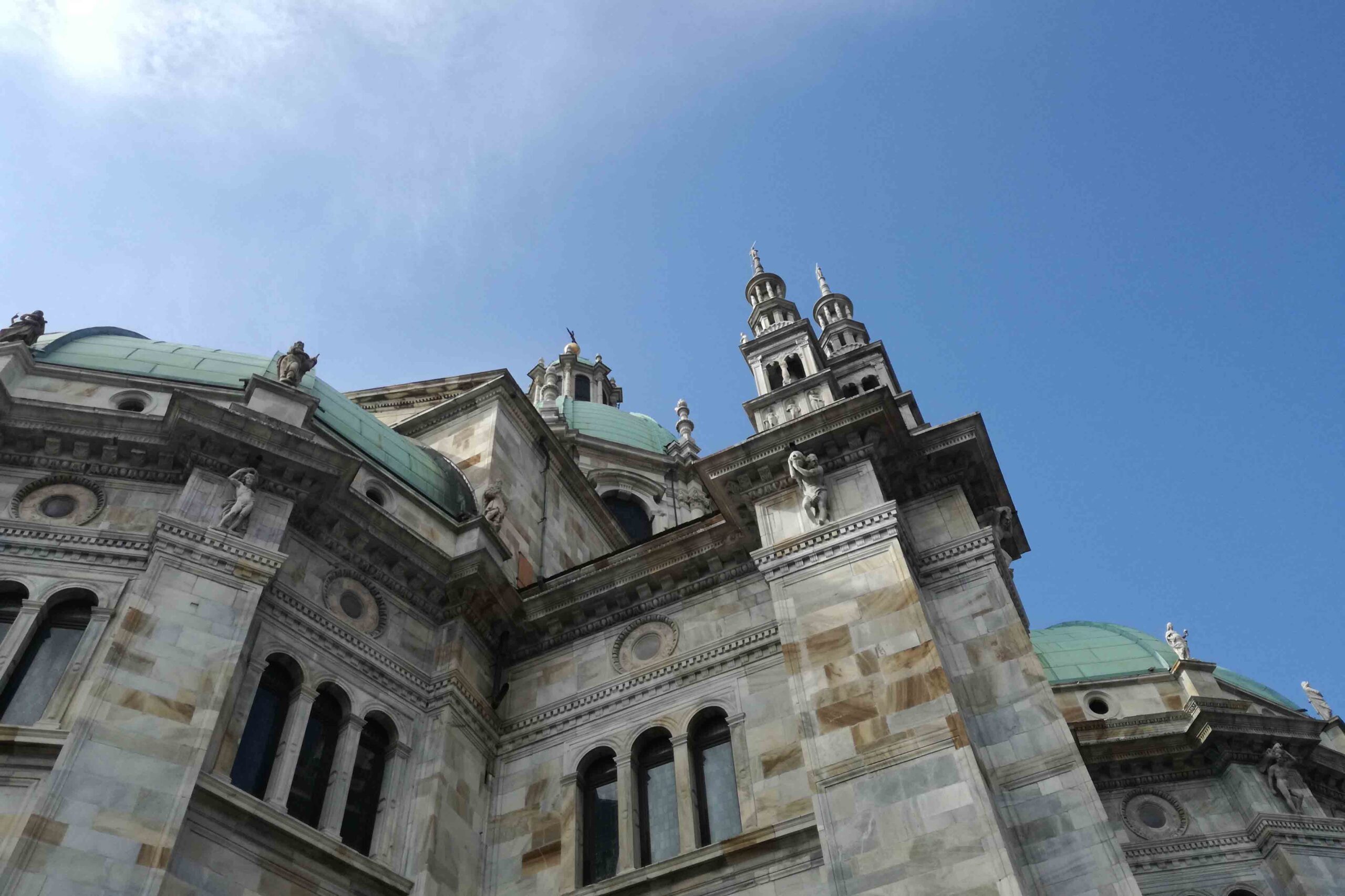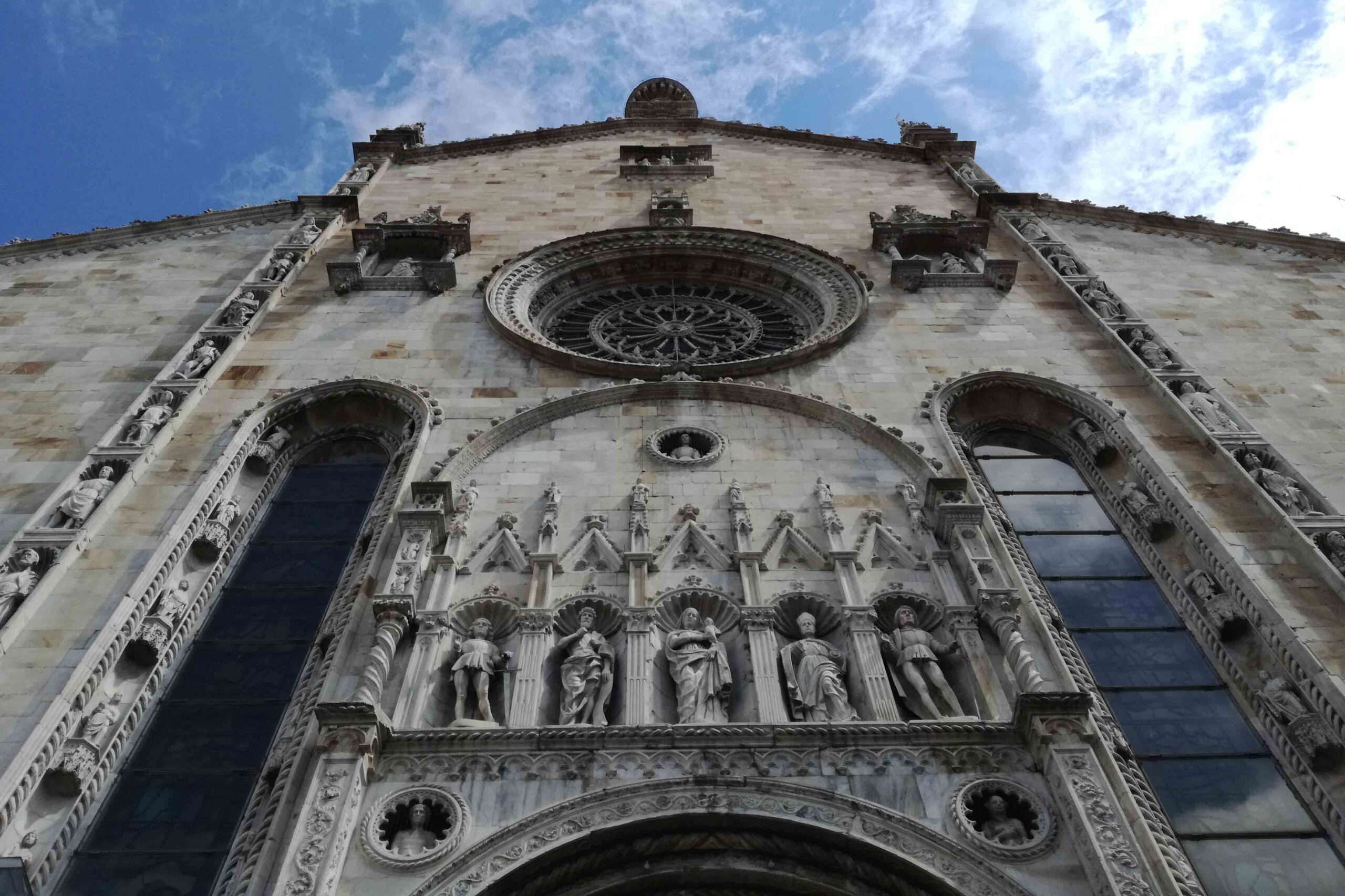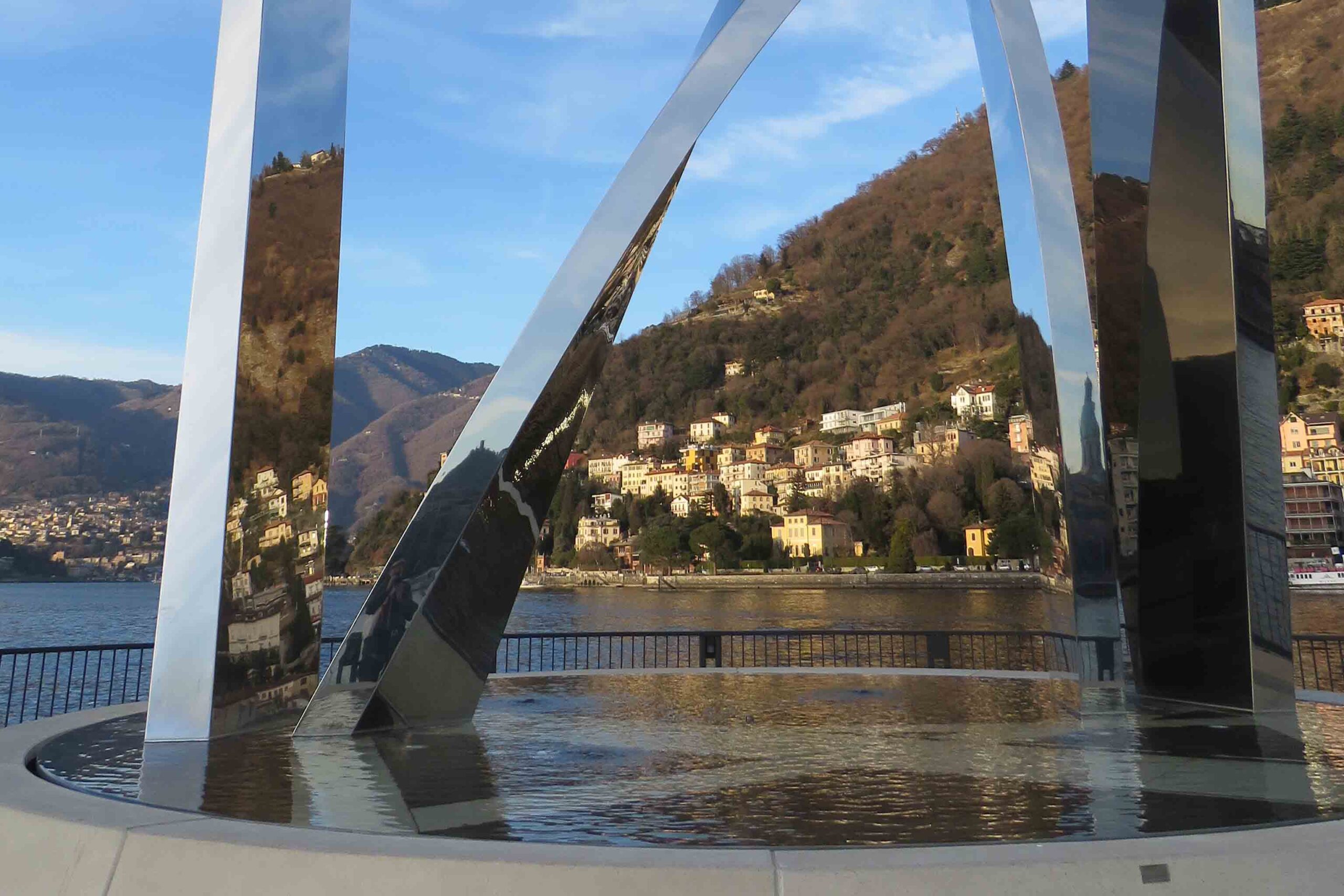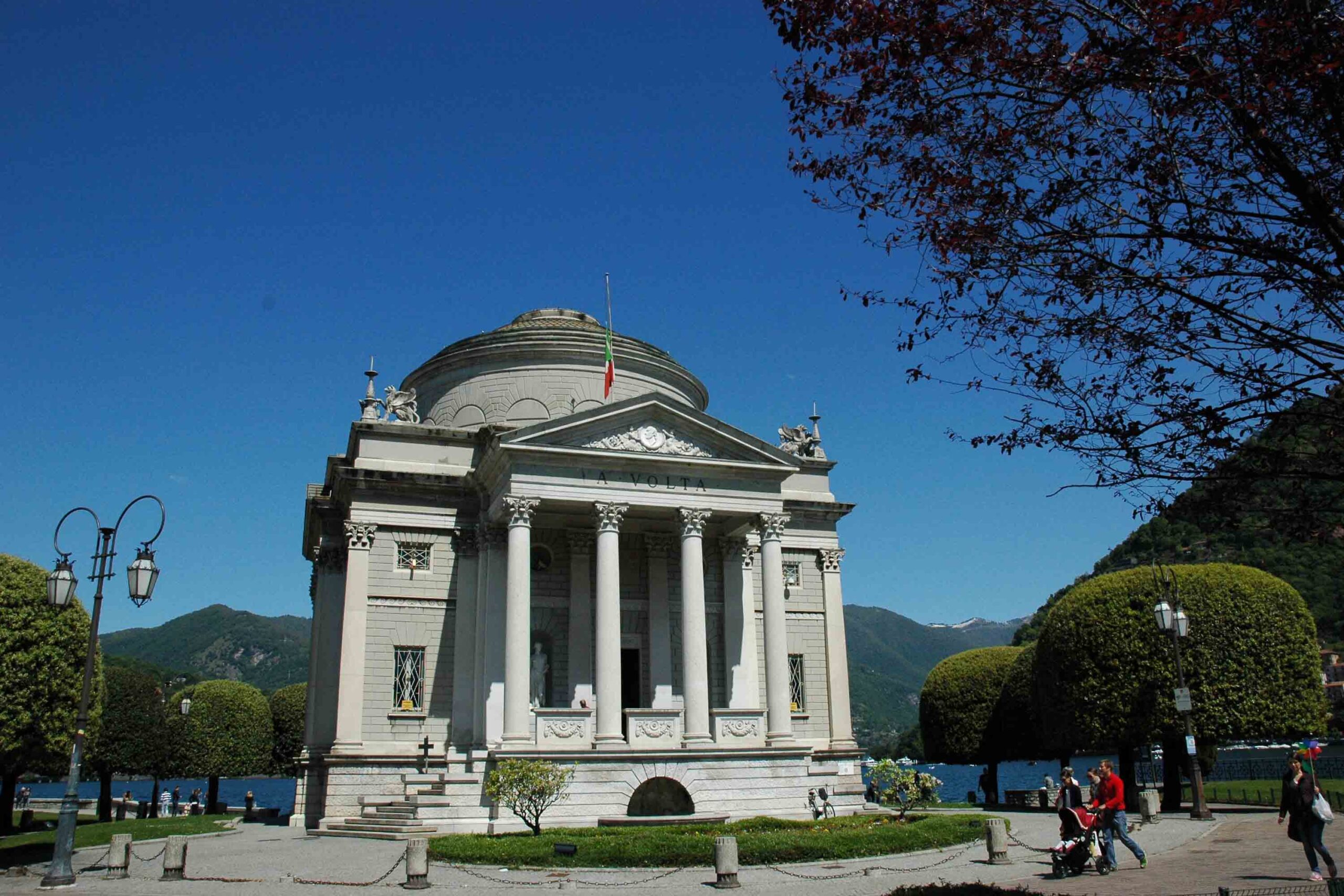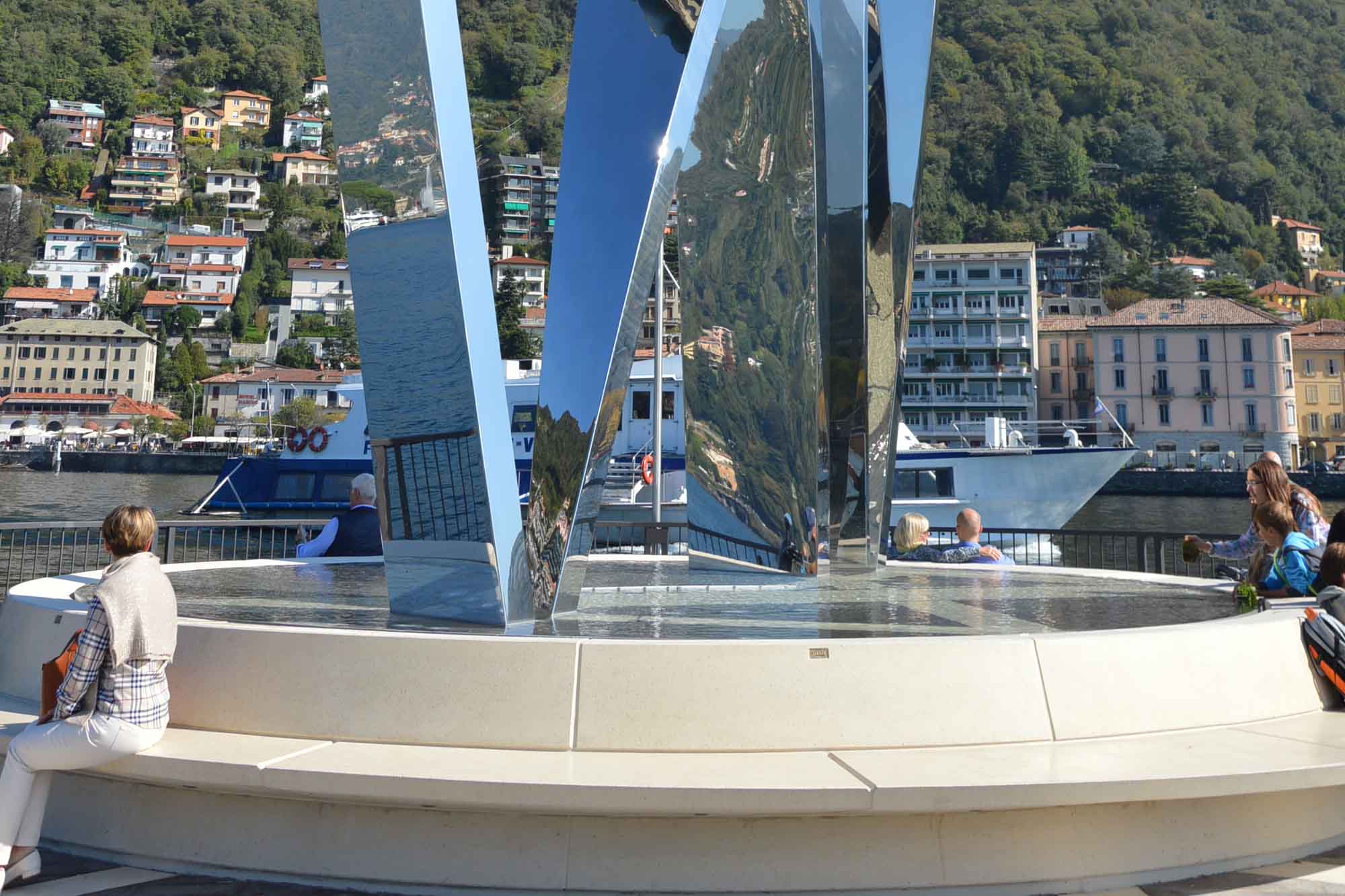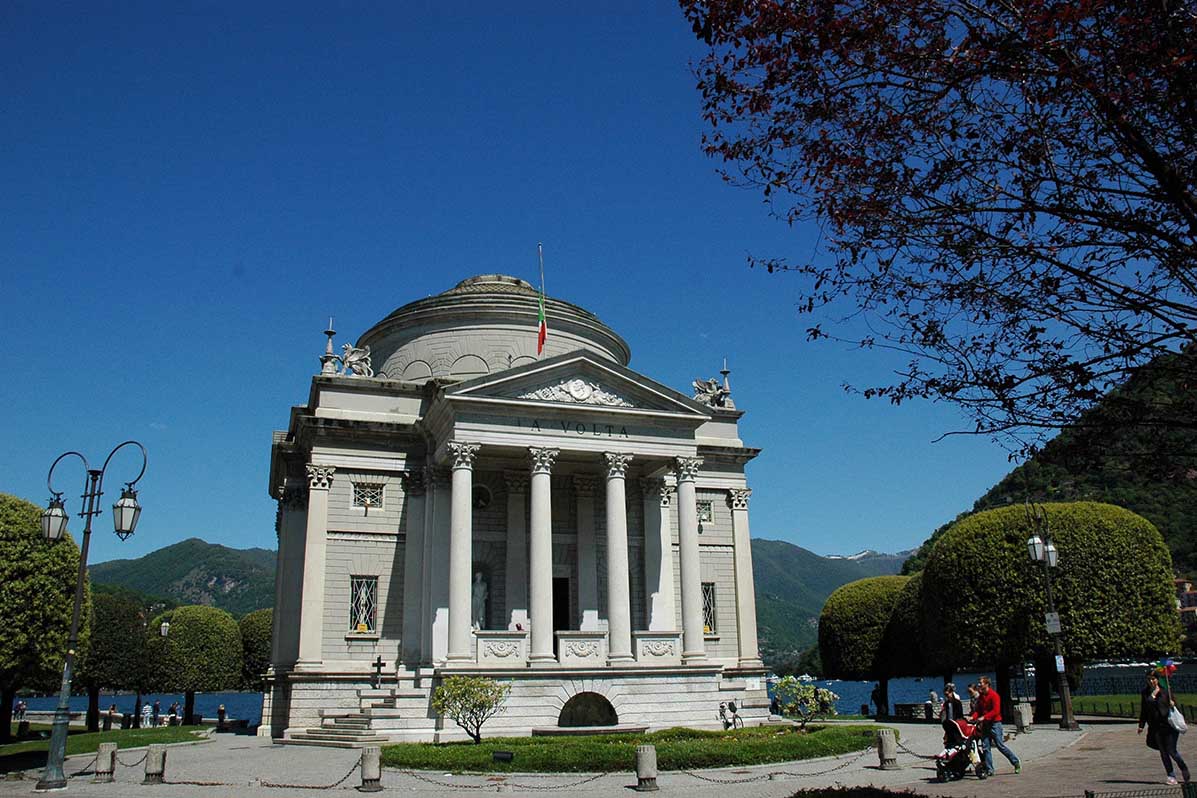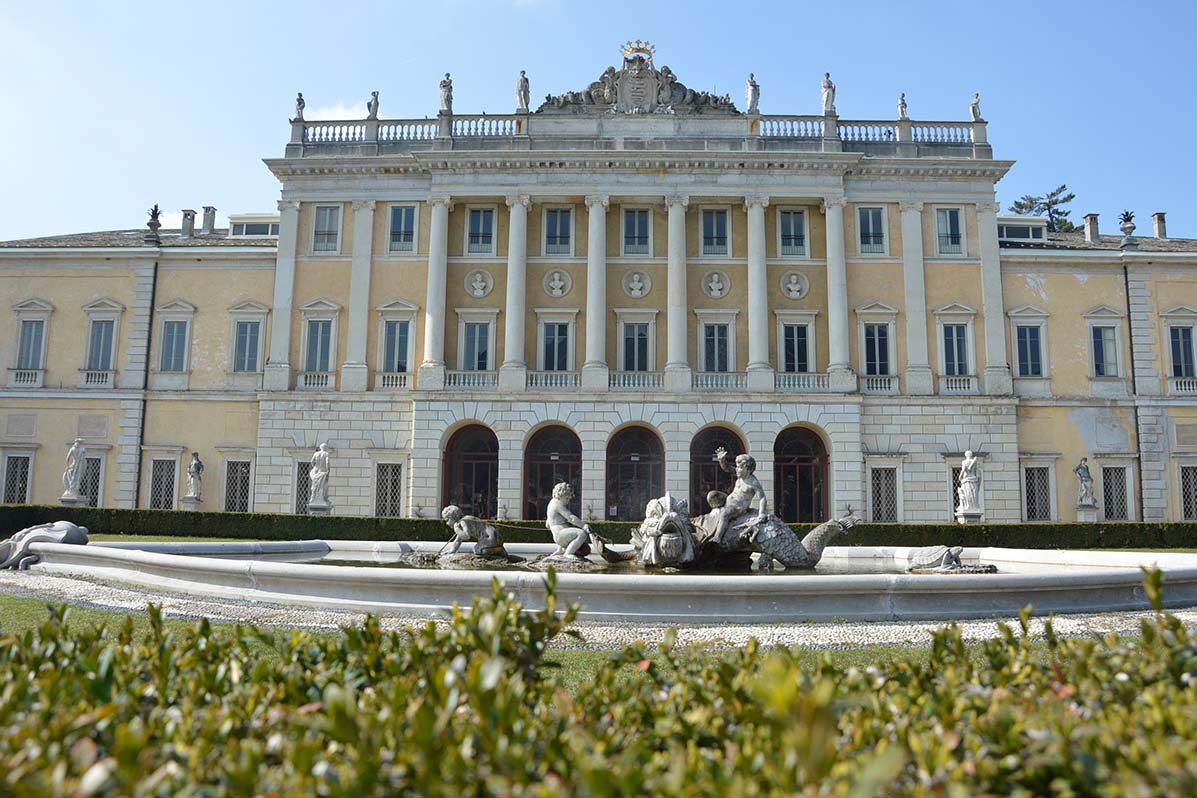profile
map
technical info
Partenza da Bergamo in direzione val Seriana per un breve tratto pianeggiante prima di affrontare una serie di salite nelle Prealpi attorno alla città. Si concatenano senza respiro il Forcellino di Bianzano (Valle Rossa), la salita di Ganda, il Passo della Crocetta a Dossena, la Forcella di Bura e il Colle di Berbenno che conclude questa prima serie di asperità coprendo oltre il 50% del dislivello complessivo della corsa. Segue una breve pianura che immette nella zona del Lago di Como che viene risalito da Lecco per arrivare a Bellagio dove inizia la salita classica del Ghisallo. Salita con pendenze fino al 14% su strada ampia con diversi tornanti. La discesa, molto veloce, si svolge per lunghi rettilinei termina a Maglio. Tratto tutto in leggera discesa per raggiungere Como dove la corsa percorrerà un circuito finale di 22 km. Si supera l’abitato di Como per affrontare una prima volta San Fermo della Battaglia (m 397), discendere su Como (percorrendo così quelli che al secondo passaggio saranno gli ultimi km) e transitare sul traguardo. Circa un chilometro dopo si affronta la dura salita verso Civiglio (614 m) con pendenze praticamente sempre attorno al 10% per ridiscendere e riattraversando Como superare per la seconda volta la salita di San Fermo della Battaglia.
Ultimi km
Ultimi 10 km che iniziano dentro l’abitato di Como, si seguono larghi vialoni fino al sottopasso ferroviario dove inizia la salita finale di San Fermo della Battaglia. La pendenza è attorno al 7% (max 10%) con carreggiata ristretta e fondo stradale ruvido. Si superano diversi tornanti fino allo scollinamento che avviene attorno ai 5 km dall’arrivo. La discesa su strada larga, ben pavimentata incontra due gallerie ben illuminate e due ampie rotatorie, termina all’ultimo chilometro. Ai 600 m dall’arrivo ultima ampia curva verso sinistra.
start / finish
climb detail
final kilometres
itinerary timetable
tourist info
Host city:
Bergamo
Touristic informations
Bergamo is a small “two-storey” city in Lombardy, with a rich history and a stunning architectural legacy. The walled upper town, Bergamo Alta, is beautifully preserved, with wonderful cobbled streets and lovely mediaeval buildings. The modern, lower town, Bergamo Bassa, is connected to the older, upper district via a funicular railway.
Points of interest
Major landmarks include the Venetian walls, which were built by the Republic of Venice in the 16th century, when Bergamo was a possession of that State, in order to protect the city from the Republic of Milan and from France, when the Republic of Venice was starting to lose its monopoly of maritime trade. These walls – a symbol of the rich and bold history of Bergamo – are the keepers of a beautiful city, waiting to be explored.
Como
Touristic informations
Como is an elegant and lively town, lying on the southwestern branch of the lake of the same name, in a unique natural landscape and surrounded by lush verdant hills. Luxurious villas, elegant buildings and ancient churches highlight the beauty of the city, while the lovely alleys and the colourful piazzas add to its charm. Como is also referred to as “the city of silk”. Back in the 1400s, Ludovico Sforza, Duke of Milan, decided to plant mulberry trees around the lake to feed the silkworms, and the city has been the largest silk producer in Italy since then.
Point of interest
The most stunning piece of architecture in town is the splendid Duomo (the cathedral), dedicated to Santa Maria Assunta. Its construction began in 1396, and lasted four centuries overall, in a splendid fusion of styles – Gothic, Renaissance and Baroque. Como is also renowned for its lakeside villas with lush gardens, such as the Neoclassical Villa Olmo, built in 1780, now a popular venue for congresses, events and art exhibitions. The city has become one of the major tourist destinations in northern Italy, and is a hit with Italian and international celebrities alike.


